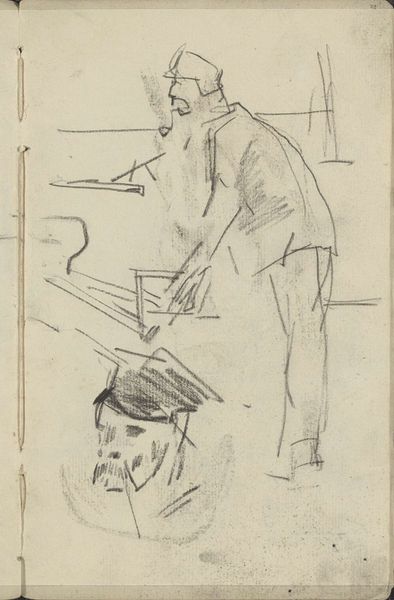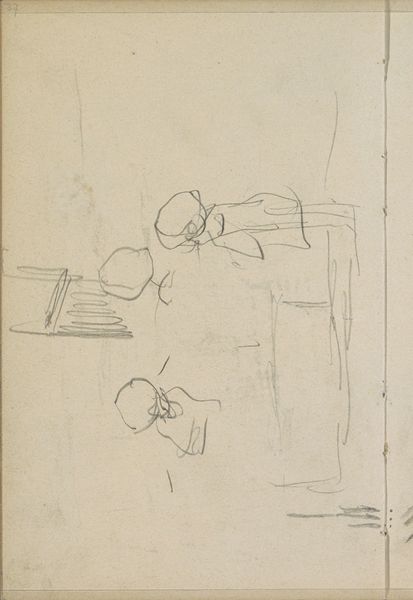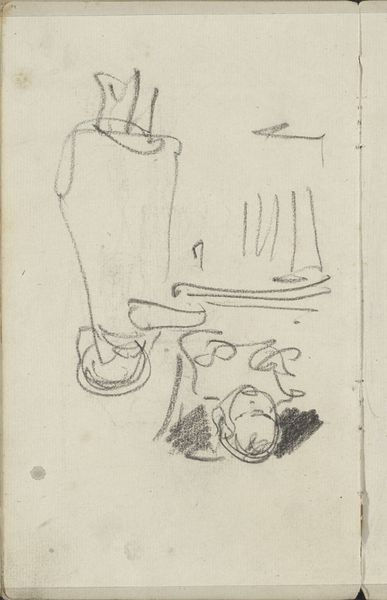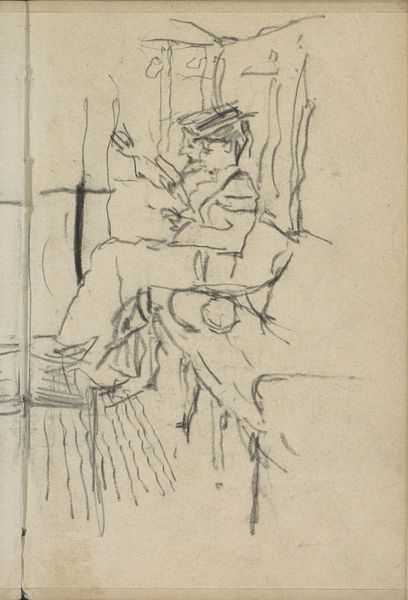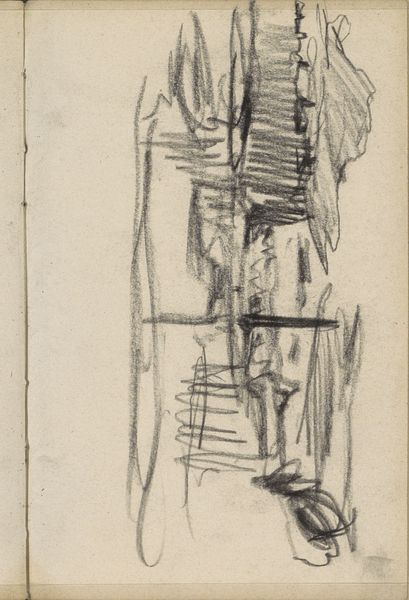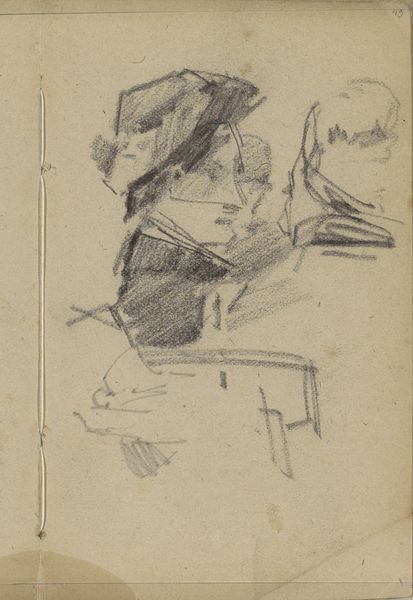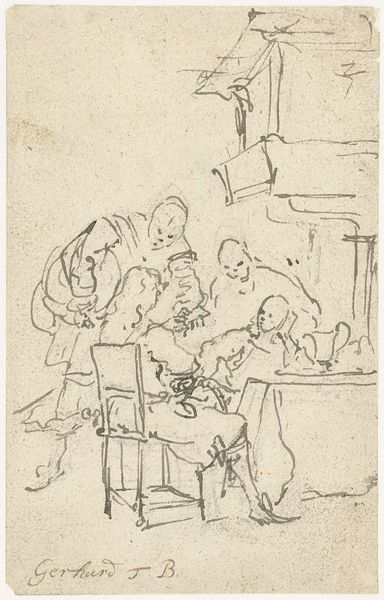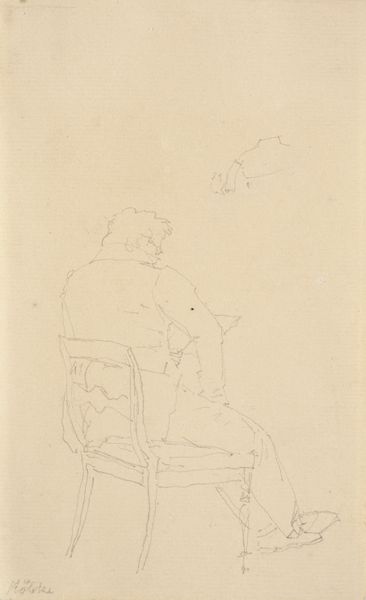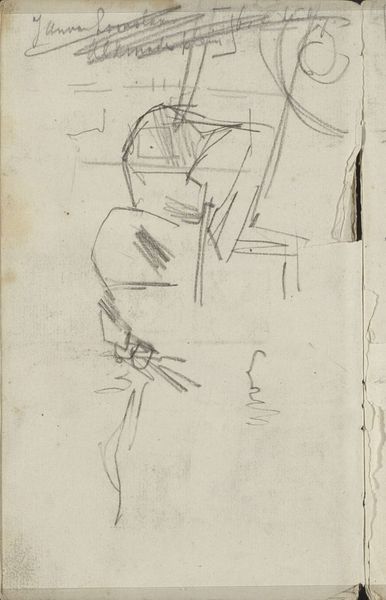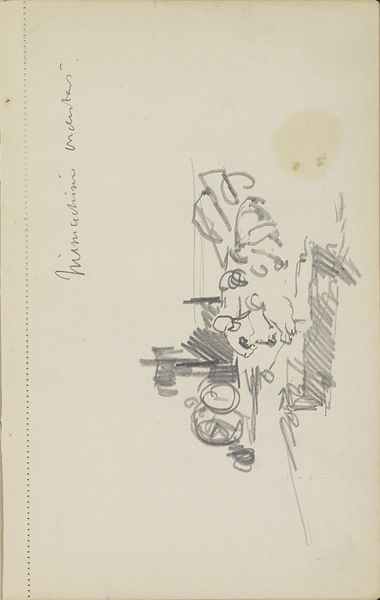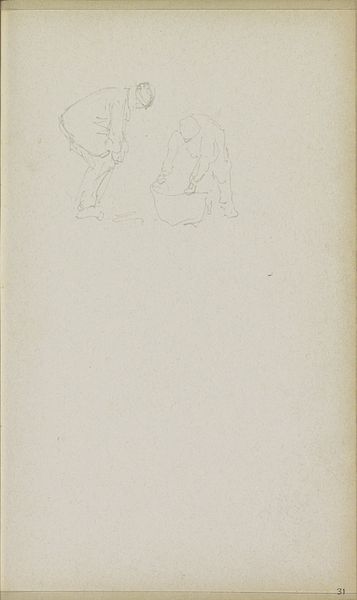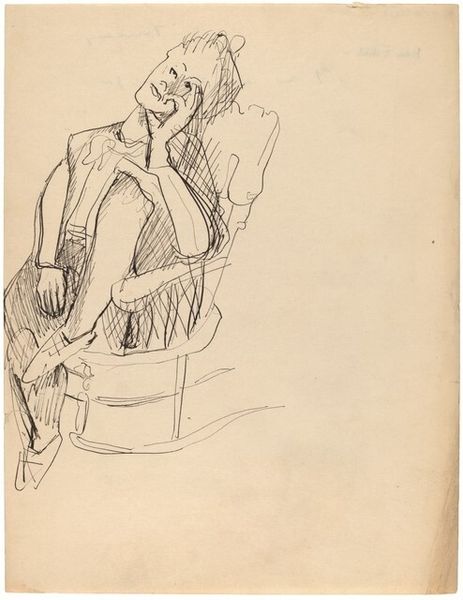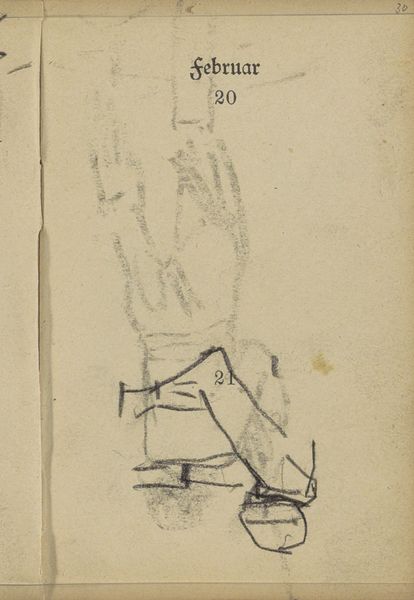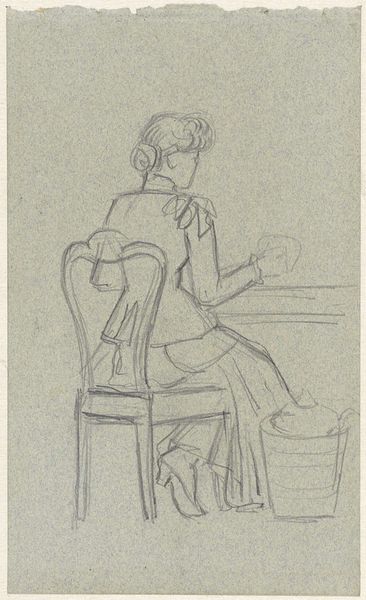
Copyright: Rijks Museum: Open Domain
Curator: Looking at this sketch, I feel a certain...awkwardness? Like a snapshot caught before everyone was ready. Editor: We’re looking at "Two Figures on a Staircase" by George Hendrik Breitner, dating from perhaps 1907 to 1911. It’s currently held in the Rijksmuseum and rendered in pencil. For me, the image speaks to Breitner's keen observations of urban life and his artistic navigation of representing the complexities of early 20th-century society. Curator: Interesting. I immediately zeroed in on the figures themselves, almost like stand-ins for the human form. They lack detail; the lines seem uncertain. Who are they, and what’s their relationship? Their hats and the way they position their bodies don't give much. It also leaves them oddly universal, representing anyone perhaps ascending within social hierarchies? Editor: Your point about the "universal" quality of the figures really resonates. Considering the context of Breitner’s career, and how his images capture the gritty realities of Amsterdam life, particularly working-class women, I consider that these “awkward” qualities actually bring immediacy. The sketch feels as though it happened in a split second and there's this beautiful simplicity of observation. We can see, for instance, how class and identity is performed in public, in everyday interactions such as using stairs, and the lack of refinement may represent that Breitner sought not to make romanticised visions of subjects but, on the contrary, realistic impressions. Curator: Right, his contemporary engagement. But even beyond that specific class dynamic, think about stairs as both architectural and symbolic devices. They connect spaces but can also represent aspiration and upward mobility but also exclusion. I consider the gender dynamics at play here. Do both figures navigate the climb differently, or are they both impacted by power dynamics and socio-economic mobility, gender or race discrimination? Editor: Your reference to exclusion highlights a poignant dimension often overlooked in historical analyses of art. Breitner wasn't just depicting; he was part of a broader conversation of what should be exhibited and considered as relevant art and what imagery gets repressed, based on class assumptions and privilege of what stories are to be seen. Curator: Ultimately, "Two Figures on a Staircase" invites us to question our assumptions about representation itself, it is important for museums to acknowledge their responsibility in exhibiting art which reflects power structures, or challenges it. Editor: Indeed. Reflecting on this artwork, I am aware of the importance of how public institutions such as museums choose to curate images for posterity, how we should always be aware and give space to artworks for new interpretations of the zeitgeist.
Comments
No comments
Be the first to comment and join the conversation on the ultimate creative platform.
